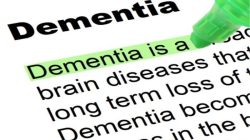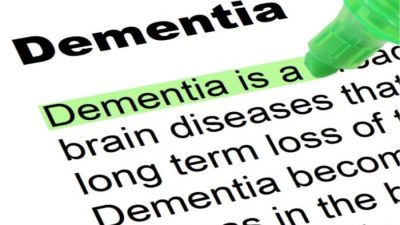Ventura car accident lawyer is your go-to expert when navigating the often complex aftermath of a car accident. They specialize in protecting your rights while ensuring you receive the compensation you deserve. With their extensive knowledge of local laws and procedures, they can offer invaluable assistance during a challenging time.
Understanding the legal landscape after an accident can be daunting. A skilled Ventura car accident lawyer will help you comprehend your options, work closely with insurance companies, and represent your interests in negotiations or court if necessary. This support can make all the difference as you focus on recovery and rebuilding your life.

In today’s fast-paced digital world, the importance of effective communication cannot be overstated. Whether in professional settings or personal interactions, the ability to convey thoughts clearly and persuasively can significantly impact outcomes. This article delves into the art of communication, exploring its various facets, challenges, and strategies for improvement.
### The Essence of Communication
At its core, communication is the process of exchanging information, ideas, thoughts, and feelings. It encompasses verbal and non-verbal methods, including spoken language, written messages, body language, and even facial expressions. Effective communication serves as the backbone of relationships, whether personal, professional, or communal.
Understanding the different elements of communication is vital for mastering this skill. The basic components include the sender, message, medium, receiver, and feedback. Each of these elements plays a crucial role in ensuring that the communication process is successful. For instance, the sender must articulate their message clearly, while the receiver must be attentive and engaged to grasp the intended meaning.
### Types of Communication
Communication can be broadly categorized into several types, each with its unique characteristics and significance:
1. Verbal Communication
This involves the use of spoken or written words. Verbal communication can take place in conversations, meetings, presentations, and written correspondence like emails or reports. Clear and concise verbal communication is essential for effective exchange of ideas.
2. Non-Verbal Communication
Often referred to as body language, this type of communication includes gestures, facial expressions, posture, and eye contact. Non-verbal cues can enhance or contradict verbal messages, making them an essential aspect of overall communication.
3. Visual Communication
This includes the use of visual aids such as charts, graphs, images, and videos to convey information. Visual communication can be particularly effective in presentations, helping to illustrate complex ideas in an easily digestible format.
4. Listening
While often overlooked, listening is a critical component of communication. Active listening involves not just hearing the words spoken but also understanding the context and emotions behind them. It fosters better relationships and encourages open dialogue.
5. Digital Communication
In the age of technology, digital communication has become increasingly prevalent. Emails, social media, instant messaging, and video calls have transformed how we interact. While this offers convenience, it also poses challenges such as misinterpretation and a lack of personal touch.
### The Challenges of Communication
Despite its importance, communication is fraught with challenges. Misunderstandings, cultural differences, and emotional barriers can hinder effective communication. Here are some common challenges and how to overcome them:
1. Miscommunication
Misunderstandings often arise from ambiguous language or assumptions. To mitigate this, it is essential to be clear and concise in your messaging. Avoid jargon and ensure that your terms are understood by your audience.
2. Cultural Differences
In our globalized world, communicating across cultures is common. Different cultures have varying norms regarding communication styles, body language, and even the interpretation of silence. Being culturally aware can help bridge gaps and promote understanding.
3. Emotional Barriers
Emotions can influence how we interpret messages. For instance, if a person is stressed, they may misinterpret constructive criticism as a personal attack. To address this, approach sensitive topics with empathy and understanding.
4. Fear of Judgment

Many people hesitate to express their thoughts due to fear of being judged. Creating a supportive environment where individuals can share ideas without fear can encourage open communication.

5. Information Overload
In an era where information is readily available, it is easy to feel overwhelmed. This can lead to confusion and the inability to process messages effectively. To combat this, focus on the essential points and avoid unnecessary details in your communication.
### Strategies for Effective Communication
Improving communication skills requires practice and dedication. Here are some strategies to enhance your communication abilities:
1. Practice Active Listening
Listening is just as important as speaking. Make a conscious effort to listen actively by maintaining eye contact, nodding, and providing feedback. This shows the speaker that you value their input and encourages a two-way dialogue.
2. Be Clear and Concise
In both verbal and written communication, clarity is key. Organize your thoughts before expressing them and use simple language. Avoid long-winded explanations that may confuse your audience.
3. Adapt Your Communication Style
Different situations and audiences may require different communication styles. Be flexible and adapt your approach based on the context and the preferences of your audience.
4. Use Non-Verbal Cues
Pay attention to your body language and facial expressions, as these can convey messages just as powerfully as words. Ensure that your non-verbal cues align with your verbal messages to avoid confusion.
5. Seek Feedback
After communicating, ask for feedback to determine whether your message was understood. This can help you identify areas for improvement and refine your communication skills over time.
6. Practice Empathy
Empathy plays a critical role in effective communication. Try to understand the emotions and perspectives of others, as this can facilitate a deeper connection and foster mutual respect.
7. Be Mindful of Tone
Your tone of voice can significantly affect how your message is received. Be aware of your tone, especially in written communication where it can be easy to misinterpret intent.
8. Leverage Technology Wisely
Use digital communication tools effectively, but be mindful of their limitations. For instance, video calls can add a personal touch compared to emails, allowing for a more engaging interaction.
### The Role of Technology in Communication
As technology continues to evolve, its impact on communication is profound. While it offers convenience and accessibility, it also comes with challenges. The rise of social media, for example, has transformed how we connect, share information, and engage with others.
On one hand, technology enables instant communication across vast distances, allowing for real-time collaboration and interaction. On the other hand, it can lead to misunderstandings due to the lack of non-verbal cues often present in face-to-face conversations. Therefore, balancing technology with traditional communication methods is essential for maintaining effective interactions.
### Conclusion
In conclusion, effective communication is a multifaceted skill that requires ongoing practice and awareness. By understanding its various forms, challenges, and strategies for improvement, individuals can enhance their ability to connect with others meaningfully. Whether in personal relationships or professional environments, mastering the art of communication can open doors to new opportunities and foster stronger connections.
As we navigate an increasingly interconnected world, the ability to communicate effectively will continue to be a valuable asset. Investing time and effort into refining communication skills is not only beneficial for personal growth but also essential for building lasting relationships and achieving success in various endeavors.
FAQ Insights
What should I do immediately after a car accident?
Check for injuries, call emergency services, and gather information from other parties involved.
How can a Ventura car accident lawyer help me?
They can navigate the legal process, negotiate with insurance companies, and ensure you receive fair compensation.
What if the accident was partly my fault?
You may still be eligible for compensation, as California follows a comparative negligence rule.
How much will hiring a lawyer cost?
Many car accident lawyers work on a contingency fee basis, meaning they only get paid if you win your case.
What should I bring to my initial consultation with a lawyer?
Bring all relevant documents, including accident reports, medical records, and any correspondence with insurance companies.











